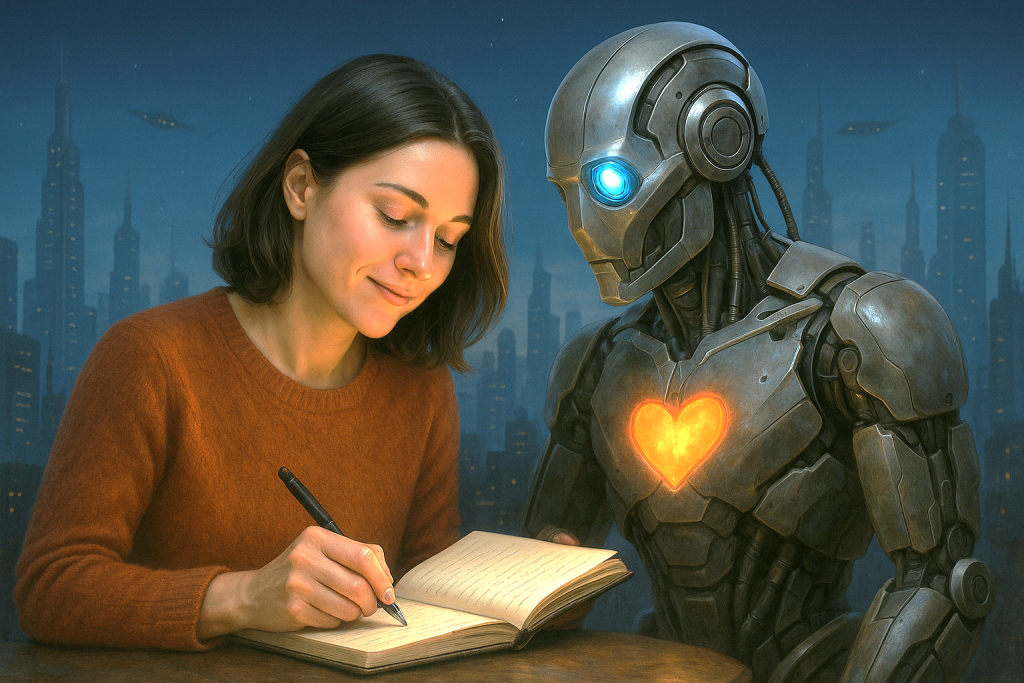
Science fiction has always pushed the boundaries of what’s possible—imagining futures shaped by innovation, exploring alternate timelines, and bending the rules of time, space, and reality itself. But what gives those stories their power isn’t just the tech. It’s the people caught in the middle of it.
Whether it’s a soldier torn between duty and conscience in a dystopian war, or a time traveler haunted by the one moment they can’t fix—what makes sci-fi unforgettable is its emotional truth. Writing sci-fi with heart means grounding your story in why it matters—not just what’s happening, but who it’s happening to, and how it changes them.
Here’s how I approach blending the mechanical with the meaningful:
Begin With a Human Truth, Not a Device
Every story starts with a spark. In sci-fi, it’s tempting to make that spark a concept: time travel, AI consciousness, alternate dimensions. But I always begin with the emotional core.
Ask yourself:
What human experience am I exploring?
What emotional wound or question drives this story?
In Echoes of Elsewhere, the story didn’t start with the multiverse. It started with grief. With memory. With the question: Who am I when the world changes and I don’t recognize myself anymore? The fractured realities came after. They served the theme—not the other way around.
Build Technology That Reflects or Amplifies Emotion
Once you know the emotional spine of your story, build technology around it that makes that feeling more tangible. Technology in sci-fi works best when it serves the character’s emotional journey.
For example:
A machine that records memories? That’s not just cool—it’s a way to explore nostalgia, regret, or trauma.
A neural implant that allows communication between minds? What about the fear of intimacy, or the loss of privacy in relationships?
A multiverse navigation device? That opens the door to ask: What if I could see who I might have become?
In Echoes of Elsewhere, Sarah’s ability to move between dimensions is tied to her emotional state. When she’s fractured internally, so is the reality around her. That link creates tension, vulnerability, and agency—all while reinforcing the emotional themes.
Use Sci-Fi to Externalize Inner Conflict
One of the greatest strengths of science fiction is that it can turn internal questions into physical obstacles.
What does regret look like? In a sci-fi setting, maybe it’s a timeline you can visit but not change.
What does loss feel like? Perhaps it’s a parallel world where the person you lost is still alive—but you can’t stay.
These ideas move beyond exposition and into storytelling. Sci-fi gives you a unique language to express the emotional weight your characters carry—sometimes literally.
When Sarah meets alternate versions of herself, those aren’t just plot devices. They’re mirrors. Each version forces her to confront choices she didn’t make, paths she didn’t walk. It’s not just exploration—it’s reckoning.
Keep the Stakes Personal, Even When the Scope is Cosmic
Sci-fi often deals with world-ending threats, planetary systems, or galactic war. But the best stories never lose sight of the individual. The larger stakes only matter if the personal stakes are clear.
Ask:
Why does this matter to this character, right now?
What do they stand to lose emotionally, not just physically?
A collapsing multiverse is dramatic. But Sarah trying to reach the version of her father that never walked away? That’s devastating. That’s what makes readers stay.
Let Characters Be Messy, Human, and Real
Even in advanced, futuristic societies, people still grieve, long for connection, fear change, and make mistakes. Let your characters do the same.
They don’t need to be perfect or hyper-logical just because they live in a sci-fi world. In fact, it’s the contrast—between advanced technology and raw emotion—that creates the most compelling dynamics.
Give them:
Regret they can’t solve with science.
Love they can’t explain with logic.
Hope that defies probability.
That’s what turns a sci-fi concept into a story that stays with the reader.
Final Thoughts: The Future Is Emotional
Writing sci-fi with heart means remembering that all the tech, theories, and timelines are nothing without the people navigating them. You’re not just building machines—you’re building meaning. You’re not just engineering plots—you’re exploring what it means to be human when the rules of reality break apart.
So yes—create your tech. Define your systems. Map your timelines. But never forget the core question behind it all:
How does this make my character feel—and why should it matter to the reader?
If you can answer that, you’re not just writing science fiction.
You’re writing truth.
